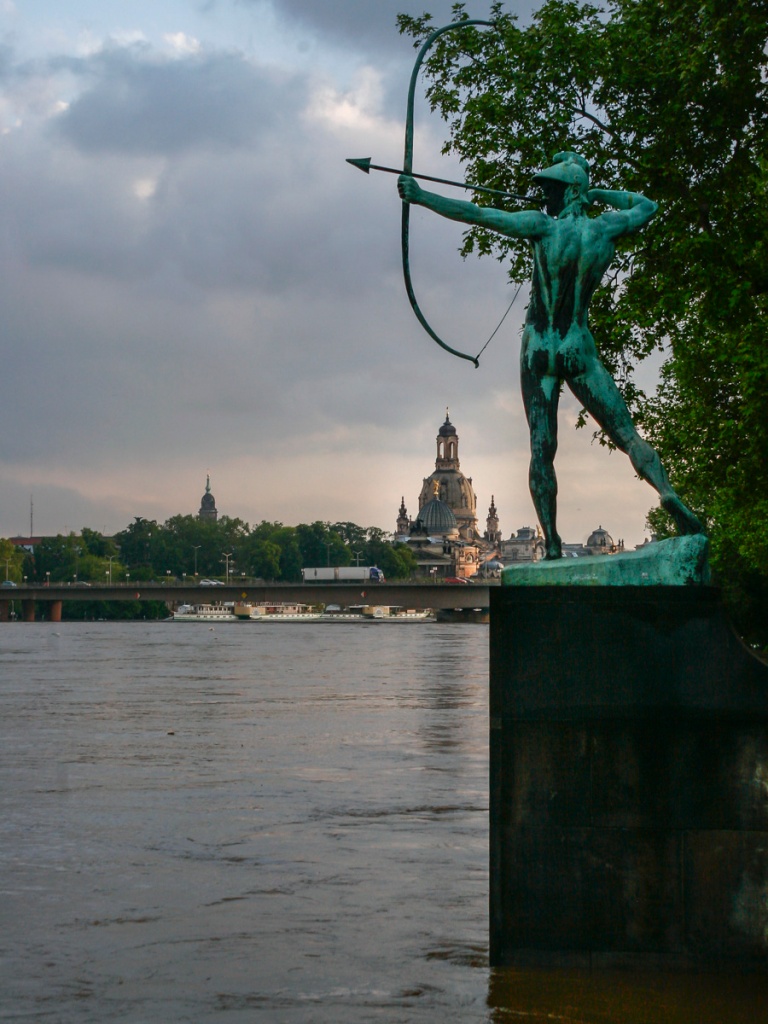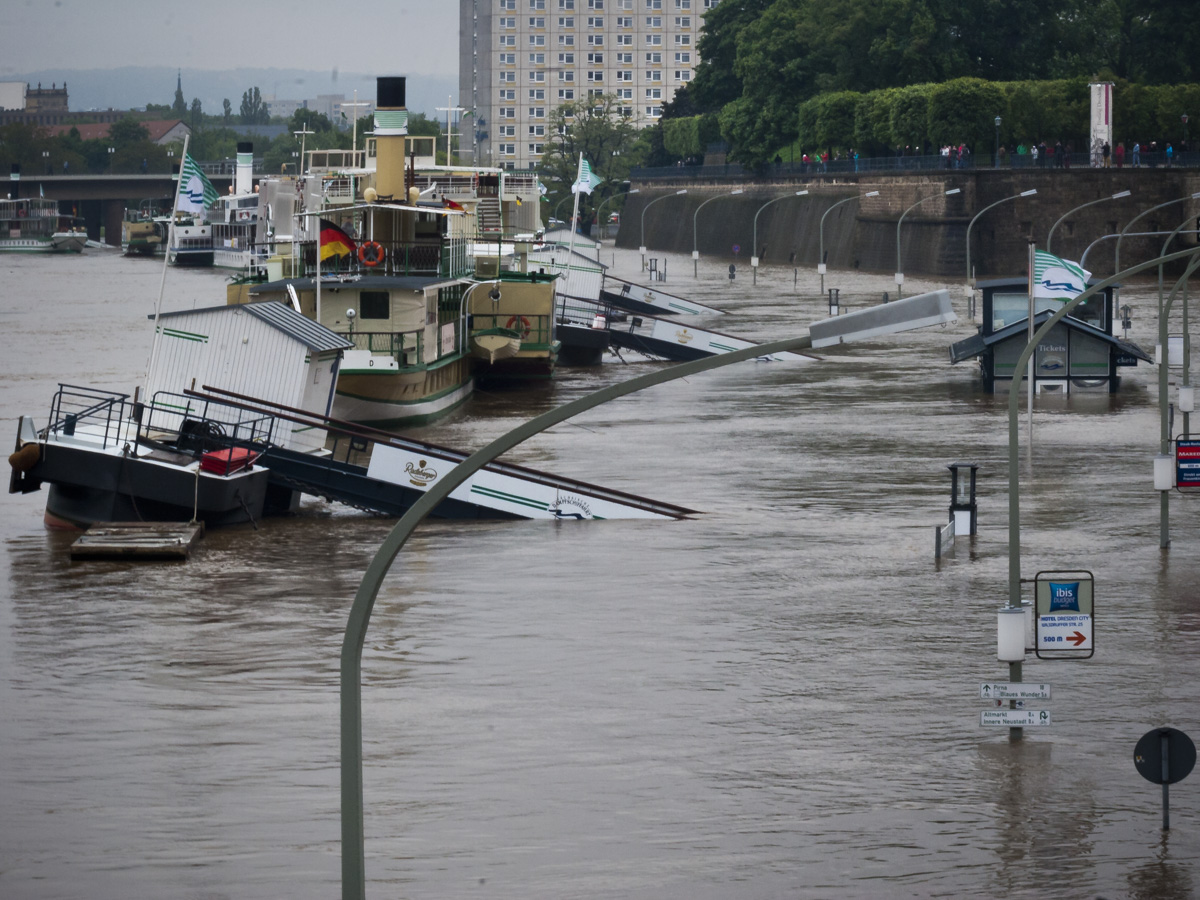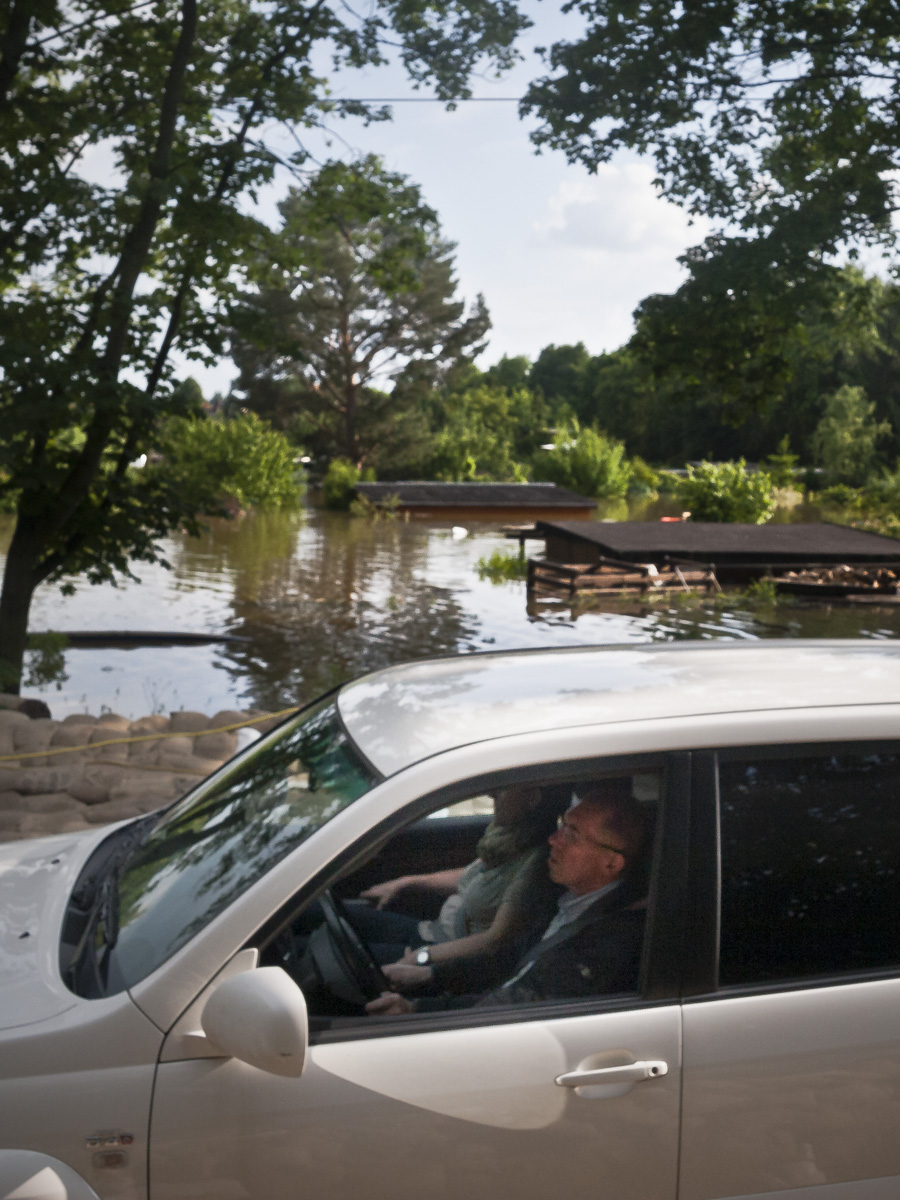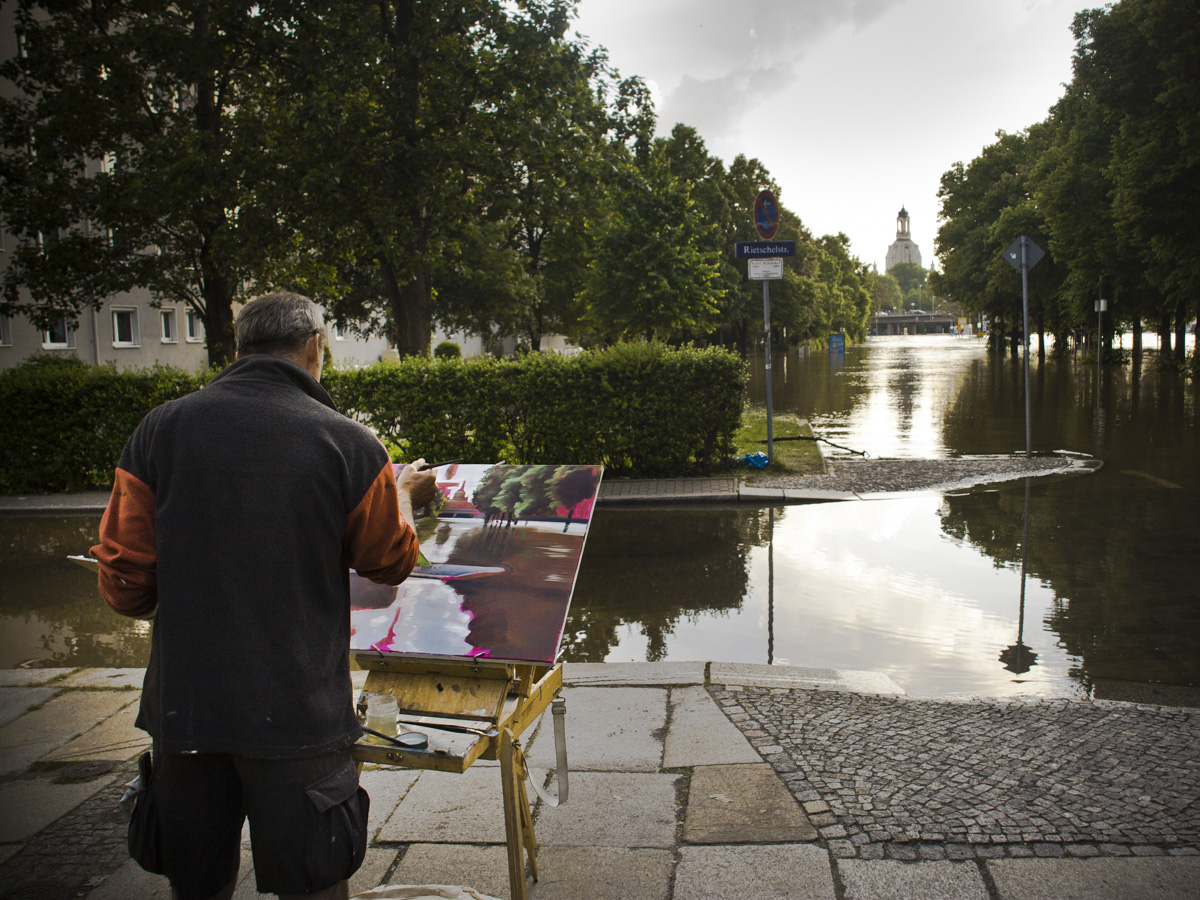The photo reportage describes the extreme flooding in Dresden in June 2013, highlighting the impact on the city and its residents. It also emphasizes the significant community response and assistance during the crisis, illustrating a sense of unity and support. The visual elements, such as the images included, effectively complement the narrative and provide a tangible representation of the situation. Overall, the content effectively portrays the resilience and solidarity of the citizens in the face of a natural disaster.
„But what is sometimes neglected in the reporting is that we have infinitely more committed citizens who turn against it, who show a willingness to help to an extent that is unimaginable. For example, we didn’t know back then, when the flood disasters in Saxony and Bavaria, how Many young people came to help without being asked.“
(Federal President Joachim Gauck, June 19, 2016)















Dresden. Im Juni 2013 erlebt die Stadt Dresden ein extremes Hochwasserereignis. Mit einem Pegelhöchststand von 8,75 Meter steigt die Elbe auf einen ihrer historischen Höchststände (der nur einmal 1845 und 2002 überboten wurde), heißt es vom Dresdener Umweltamt. Das Bemerkenswerte: Die bislang schwerwiegendste Flut von 2002 lag vergleichsweise nahe zurück. Die Hochwasserabwehr hatte daraufhin Priorität. Viele der neuen Schutzmaßnahmen, vor allem die zur Abschirmung der barocken Innenstadt, hielten dem Wasser stand.
In Dresdens peripheren Stadtgebieten, etwa das von Häuslebauern und Kleingärtnern beliebte Laubegast, gut zehn Kilometer von der Frauenkirche entfernt, ist die Stimmung schlecht. Hier treibt Holz und Schlamm entlang, Wege und Straßen liegen unter Wasser, Anwohner schütteln die Köpfe ob der Schäden an ihrem Eigentum und die Jungs vom Technischen Hilfswerk sitzen geschafft auf Sandsäcken. Boote patrouillieren zwischen abgeschnittenen Stadtteilen, um Plünderer abzuschrecken und Hilfsbedürftige zu versorgen.
Das Hochwasser beeinträchtigt den Berufsverkehr: Brücken und Straßen sind für Fahrzeuge gesperrt oder unpassierbar. Der Effekt: Es herrscht weniger vom sonst so geschäftigen Großstadtlärm. Dafür sind mehr Menschen auf den Straßen zu sehen – auf Umwegen von und zur Arbeit, um bei der Hochwasserabwehr zu helfen, weil viele Schulen und Kindergärten geschlossen bleiben oder weil sie einfach Schaulustige des so seltenen Elbe-Ausnahmezustands sind.
English translation:
Dresden. In June 2013, the city of Dresden experienced an extreme flood event. With a water level of 8.75 meters, the Elbe river was rising to one of its historical highs (which was only exceeded once in 1845 and 2002), according to the Dresden Environmental Agency. What’s remarkable is that the worst flood to date, in 2002, was comparatively close behind. Flood defense then became a priority. Many of the new protective measures, especially those to shield the baroque city center, withstood the water. In Dresden’s peripheral urban areas, such as Laubegast, which is popular with home builders and allotment gardeners and about ten kilometers from the Frauenkirche, the mood is bad. Wood and mud are floating along here, paths and streets are under water, residents are shaking their heads at the damage to their property and the guys from the Technical Relief Agency are sitting on sandbags. Boats patrol between cut-off neighborhoods to deter looters and provide care to those in need. The flooding is affecting rush hour traffic: bridges and roads are closed to vehicles or impassable. The effect: There is less of the otherwise busy city noise. But more people can be seen on the streets – on detours to and from work to help with flood defenses, because many schools and kindergartens remain closed or because they are simply onlookers of the Elbe’s rare state of emergency.
